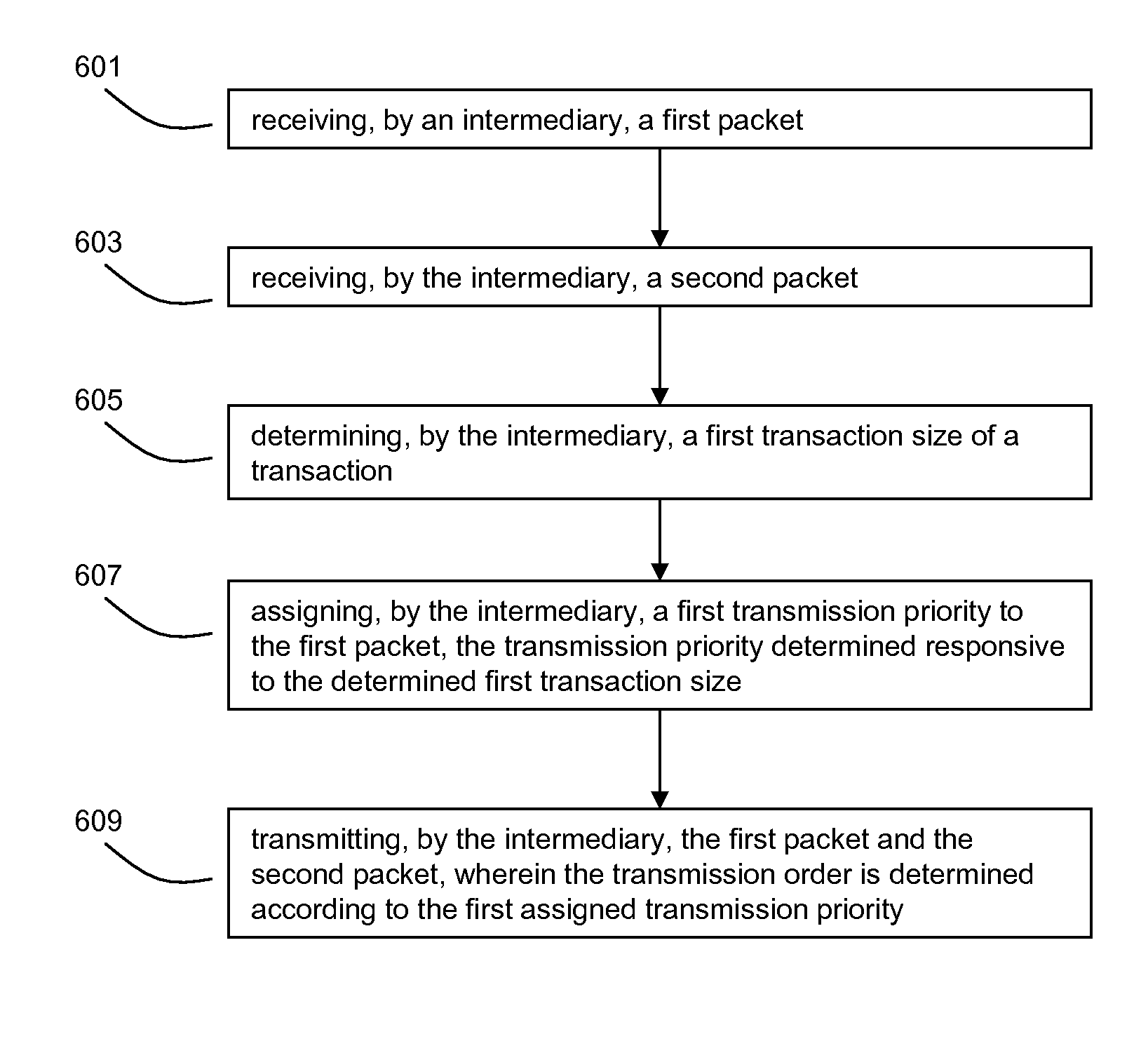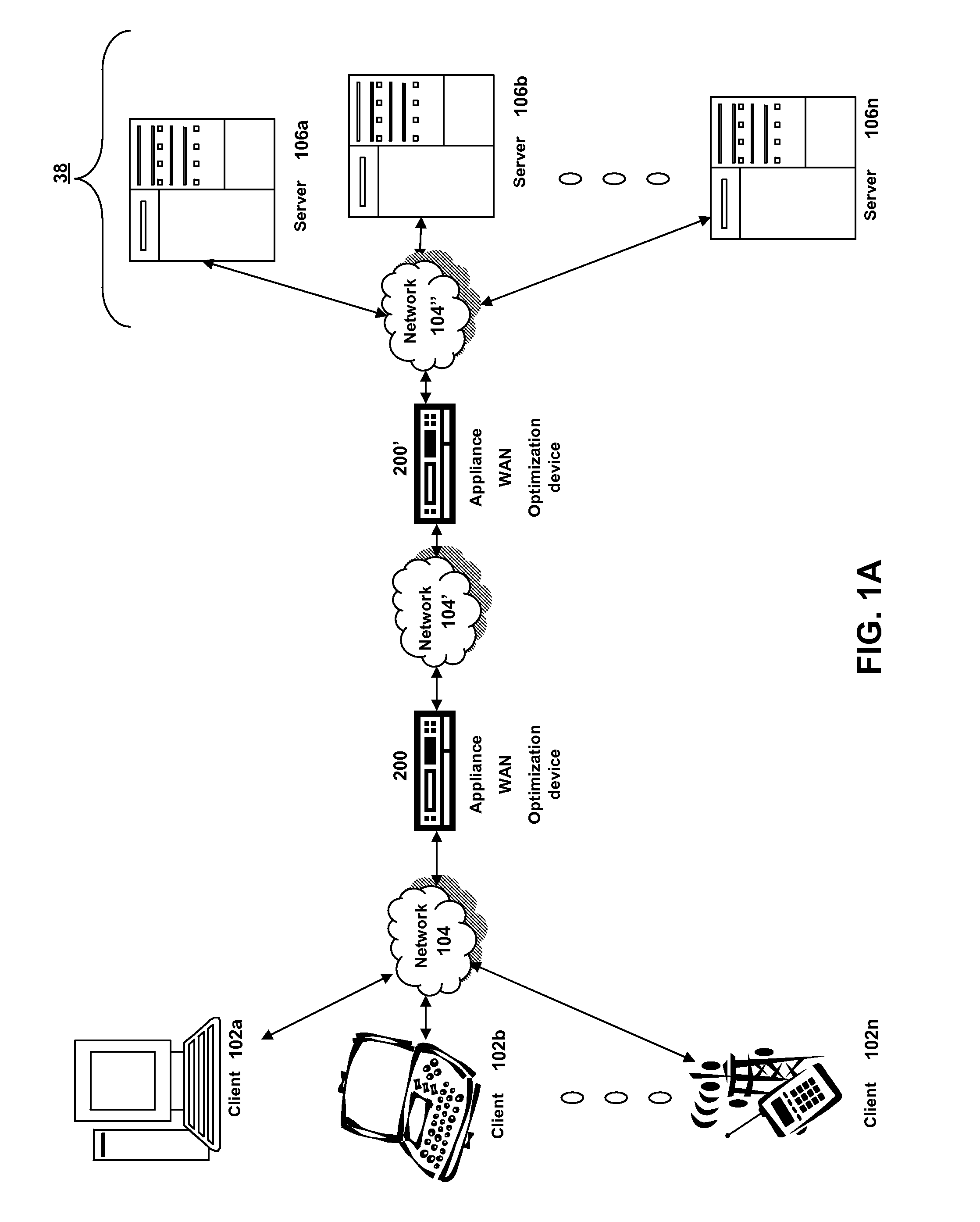Systems and methods of using packet boundaries for reduction in timeout prevention
a packet boundary and timeout prevention technology, applied in data switching networks, frequency-division multiplexes, instruments, etc., can solve the problems of slow application response times, inability to guarantee latency of bandwidth allocation, and difficulty in identifying interactive traffic, so as to improve network latency and avoid additional delays
- Summary
- Abstract
- Description
- Claims
- Application Information
AI Technical Summary
Benefits of technology
Problems solved by technology
Method used
Image
Examples
Embodiment Construction
[0029]For purposes of reading the description of the various embodiments of the present invention below, the following descriptions of the sections of the specification and their respective contents may be helpful:[0030]Section A describes a network environment and computing environment useful for practicing an embodiment of the present invention;[0031]Section B describes embodiments of a system and appliance architecture for accelerating delivery of a computing environment to a remote user;[0032]Section C describes embodiments of a client agent for accelerating communications between a client and a server;[0033]Section D describes embodiments of systems and methods for using transaction boundaries to determine transmission priorities; and[0034]Section E describes embodiments of systems and methods for reducing timeout penalties and costs associated with network connections
A. Network and Computing Environment
[0035]Prior to discussing the specifics of embodiments of the systems and m...
PUM
 Login to View More
Login to View More Abstract
Description
Claims
Application Information
 Login to View More
Login to View More - R&D
- Intellectual Property
- Life Sciences
- Materials
- Tech Scout
- Unparalleled Data Quality
- Higher Quality Content
- 60% Fewer Hallucinations
Browse by: Latest US Patents, China's latest patents, Technical Efficacy Thesaurus, Application Domain, Technology Topic, Popular Technical Reports.
© 2025 PatSnap. All rights reserved.Legal|Privacy policy|Modern Slavery Act Transparency Statement|Sitemap|About US| Contact US: help@patsnap.com



